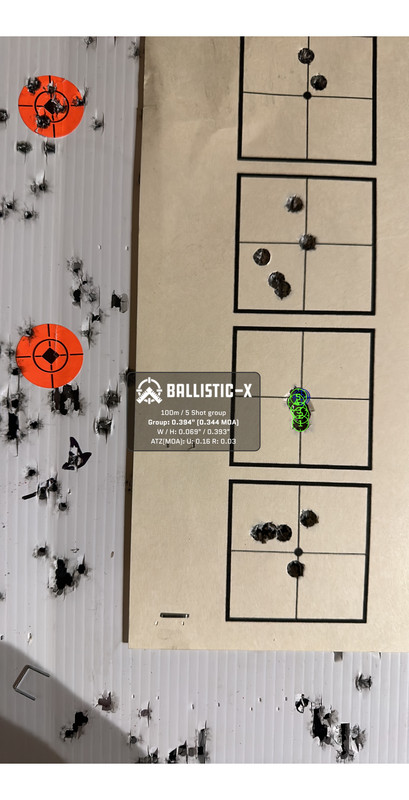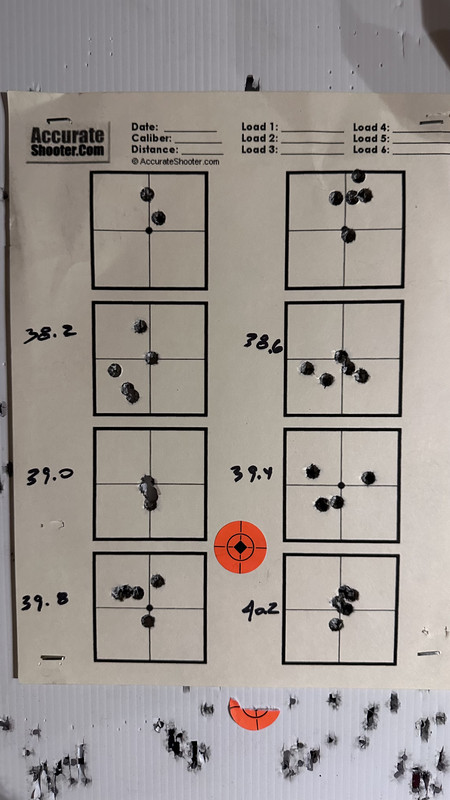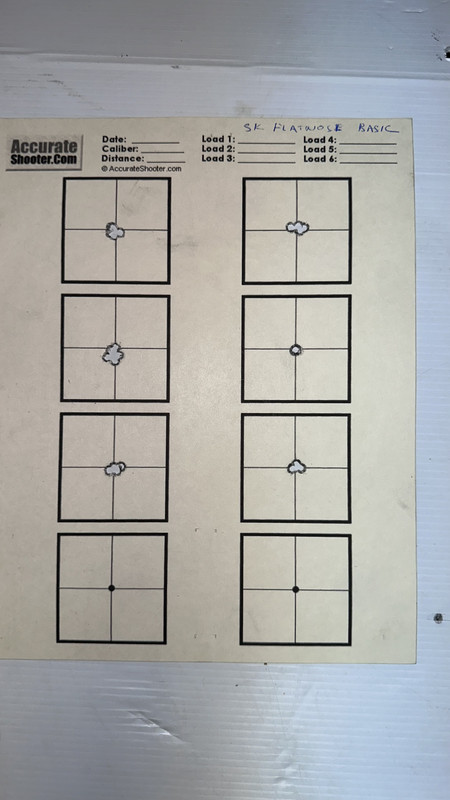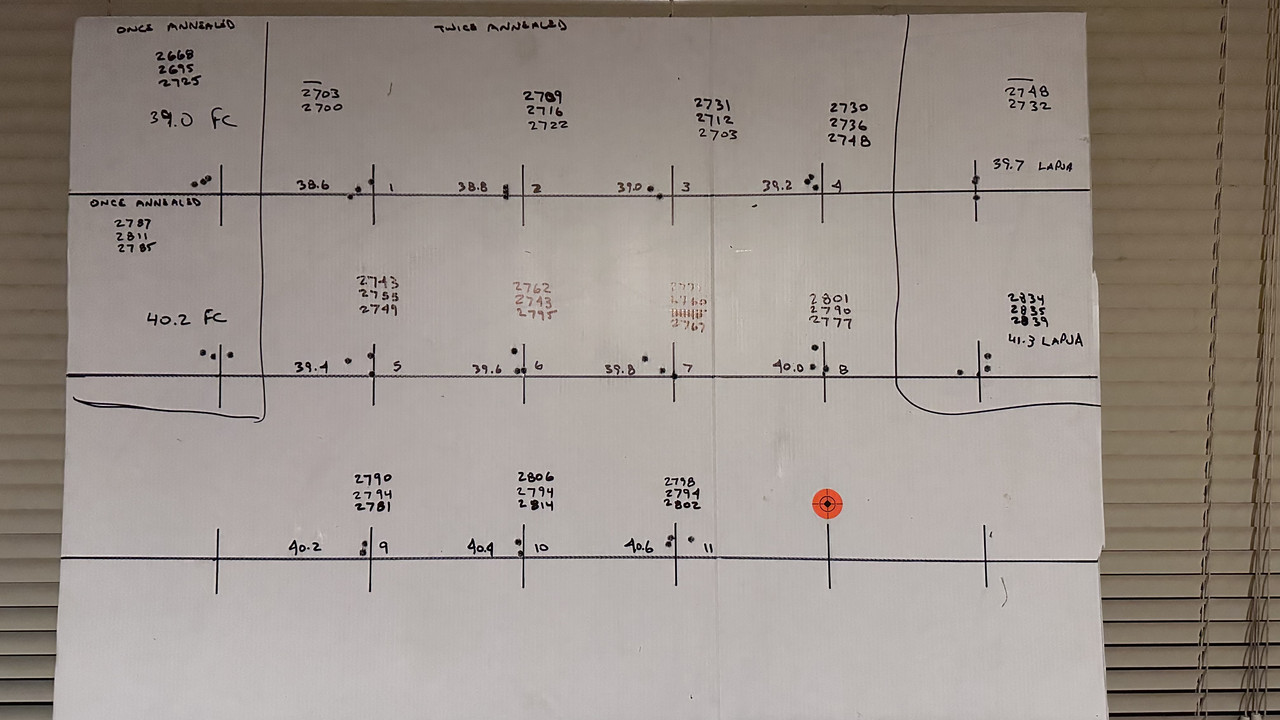I replaced the barrel on my 6.5 Creedmoor over the winter and ran a new ladder test today.
Conditions weren’t ideal with an 18 mph wind with gusts up to 30mph.
Temperature was 32F
Lapua brass, CCI BR-4, H4350, 140gr ELD-M
I found 3 nodes at 39gr, 40.2gr and at 41.4gr.
At 39gr the average velocity was 2670 FPS, ES 9.51, SD 4.02. Drop at 600M is 4.3 MRAD.
At 40.2gr the average velocity was 2737 FPS, ES 11.49, SD 4.81 Drop at 600M is 3.9 MRAD.
At 41.4 the average velocity was 2830 FPS, ES 13.07, SD 5.57. Drop at 600M is 3.3 MRAD.
The most accurate node was the lowest at 0.35moa.
The next best was the middle node at 0.56moa.
I will be shooting a clinic out to 600m in 3 weeks.
Is there any disadvantage to shooting the lowest load?

Conditions weren’t ideal with an 18 mph wind with gusts up to 30mph.
Temperature was 32F
Lapua brass, CCI BR-4, H4350, 140gr ELD-M
I found 3 nodes at 39gr, 40.2gr and at 41.4gr.
At 39gr the average velocity was 2670 FPS, ES 9.51, SD 4.02. Drop at 600M is 4.3 MRAD.
At 40.2gr the average velocity was 2737 FPS, ES 11.49, SD 4.81 Drop at 600M is 3.9 MRAD.
At 41.4 the average velocity was 2830 FPS, ES 13.07, SD 5.57. Drop at 600M is 3.3 MRAD.
The most accurate node was the lowest at 0.35moa.
The next best was the middle node at 0.56moa.
I will be shooting a clinic out to 600m in 3 weeks.
Is there any disadvantage to shooting the lowest load?

Last edited:





